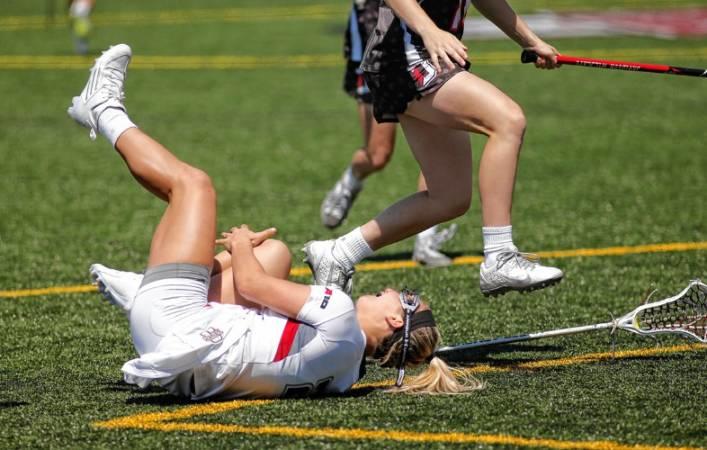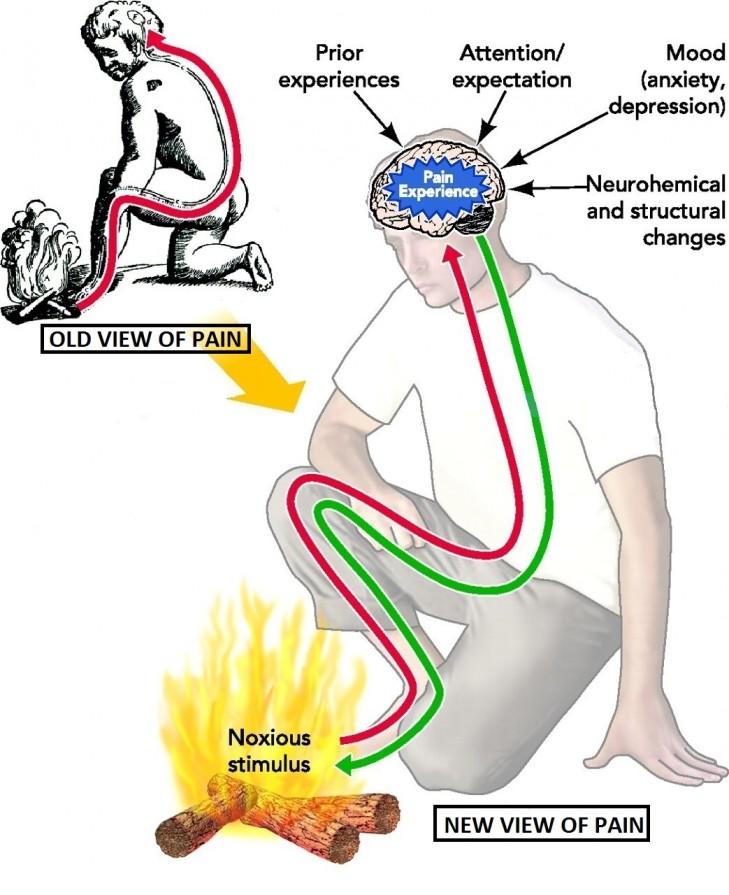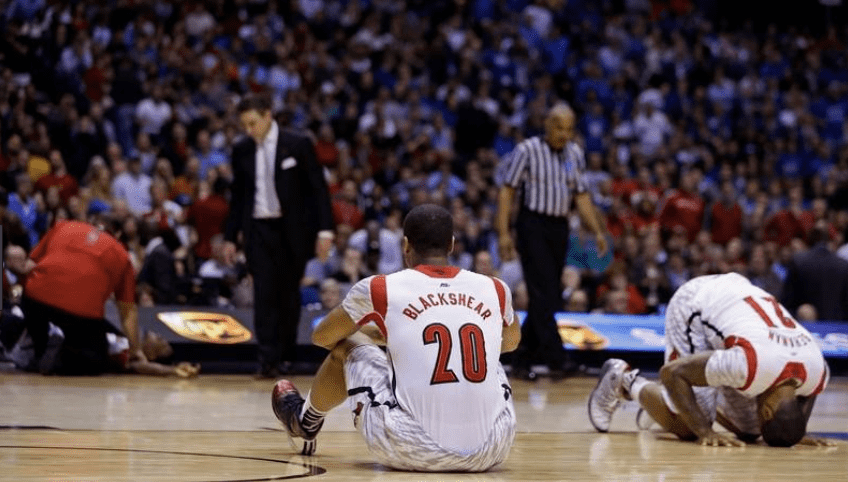Pain: This Shit is Complicated

Did you know that the US healthcare system spends approximately two billion dollars a year on the management of pain due to sport-related injuries alone? Beyond just the physical discomfort, this pain creates a huge financial burden for athletes when it comes to things like rehabilitation costs and loss of salary.
- 50.9% of all NHL players missed at least one game within a season of play, and injuries represent a total salary cost of approximately $218 million yearly (3).
- Knee injuries alone cost the NBA $358 million dollars last year (9).
- The NFL spends around $35 million dollars annually in salaries to players who cannot play due to pain or injury (9).
- Medical costs for sports injuries and pain-related ER visits exceed $935 million each year (6,7).
- Training and sport related pain accounted for 20% of all ER visits for children ages 6-19 (6).
- The US spends $50 billion on the treatment of back pain each year. (NIH 2,4).

These statistics are staggering, but the fallout from pain can affect athletes at a much deeper level. Pain is also the number one reason for lost practice time and games missed, dramatically influencing athletic identity, mood, and anxiety levels. Pain leads to a vicious cycle of energy and time expenditure on imaging, surgeries, and especially highly addictive drugs(7).When you put all of this together, what you have is a seemingly mundane part of life turning into an alarming epidemic.
Why Do I Hurt?
There is a good chance many of you reading this fall into one of two categories of athlete: recreational or professional. As such, I would imagine that many of you have also probably tweaked an ankle on the field or hurt your back lifting at some point in your athletic career. As a result, you’ve likely experienced some level of pain associated with an injury. This pain served as a protective mechanism; it told you something in your body was harmed and needs to be protected. Damage to tissues occurred and those messages were relayed to your brain to tell you that you were hurt. To fix the issue, all you needed to do was rest a little and everything would get better….until it didn’t. Sure, the injury likely healed, so why is there still pain? As you will come to learn, there doesn’t have to be tissue damage for pain to be present.
 Pain can take away the opportunity for athletes to train and compete. It shifts the mental focus from performance to perseverance. The relationship between pain and sport/training is challenging, and it is pivotal for us as coaches to understand pain so we can aid our athletes in setting aside the emotional reaction, reclaim a positive mindset, and continue training to correct the root cause of the pain and improve other physical attributes. Speaking of something that would hurt like hell, it’s time to crack the bone and suck the marrow. Here we go!
Pain can take away the opportunity for athletes to train and compete. It shifts the mental focus from performance to perseverance. The relationship between pain and sport/training is challenging, and it is pivotal for us as coaches to understand pain so we can aid our athletes in setting aside the emotional reaction, reclaim a positive mindset, and continue training to correct the root cause of the pain and improve other physical attributes. Speaking of something that would hurt like hell, it’s time to crack the bone and suck the marrow. Here we go!
Pain, in and of itself seems rather simple, but in actuality there is a lot going on below the surface we aren’t even aware of.. In part one of our series, you will learn exactly how our brain interprets pain and why pain is a such a unique experience.
It’s All In Your Head…Kind Of
Pain is defined as “an unpleasant sensory and emotional experience associated with actualor potentialtissue damage” (International Association for the Study of Pain). Pain is not just a simple sensation though; in reality, it’s a complex and multifaceted experience. Pain is also not inherently bad, but common and essential to the preservation of life and limb (@ingob). Think about it, I sure wouldn’t want to be that guy that can’t feel his hand on a hot stove!
French philosopher and scientist René Descartes developed the original explanation of pain and its cause; in his description, he separated the brain from the body and proposed that the level of pain experienced was directly related to the amount of tissue damage sustained.His thought was that tissues of the body were relaying pain signals to the brain, and his idea aligns well with what people experience when injure themselves (1,8).
Think back to a training session where you smoked your back deadlifting, or the last time your fingers hurt and you had to pull landscaping duty. You probably felt muscles tearing off the bone and discs exploding like jelly doughnuts. But as we’ve said before, your feelings will lie to you, and we know now that Descartes’ idea simply isn’t true.
 Pain is 100% an output from the brain. The tissues of your body are relaying messages, but they themselves have nothing to do with pain. This messaging process is called Nociception; Interestingly enough, nociception can occur in the absence or presence of pain, and pain can occur in the absence of measurably noxious stimuli, like your 3-year-old cousin kicking you in the shin (9).
Pain is 100% an output from the brain. The tissues of your body are relaying messages, but they themselves have nothing to do with pain. This messaging process is called Nociception; Interestingly enough, nociception can occur in the absence or presence of pain, and pain can occur in the absence of measurably noxious stimuli, like your 3-year-old cousin kicking you in the shin (9).
Your tissues deliver information about heat and cold (thermal), position, pressure, loading (mechanical), and damage or inflammation (chemical) (9). You say your back rounding in the bottom of a squat or a deadlift doesn’t matter? This positional nociceptive information is relayed to the brain. If the brain perceives this stress as a large enough threat, that all too familiar perception of stiffness and pain will appear. Your brain is telling you your tissues are in danger, and to knock that shit off!
Did you cause any damage? Maybe not today, but if continued long enough the potential for injury increases with each training session (10). In the meantime, do yourself a favor and get on the Dynamic Movement Prep Seriesto build bulletproof movement patterns. Interestingly enough, MRI studies have failed to demonstrate a clear relationship between pathology observed on MRI and the athlete’s pain.In fact, research shows that roughly 80% of us all show some form of nasty “damage” like disc herniations, degenerative disc disease, and small fractures but are completely pain free (11)!
What this means for athletes is it may be more helpful to forgo the expensive polaroid and concentrate on working hard to strengthen tissues in good positions at a progressive rate in order to build tolerance to loads and stresses. This will increase the threshold for nociception, which allows you to lift more weight, endure more training, and tolerate more “pain” and discomfort. The needle is pushed in the right direction!
Pain in Life is Inevitable, Suffering is Optional
When you listen to athletes describe pain, it becomes apparent very quickly that what they are experiencing is simply a signal of stress. It serves as a warning mechanism to a threat (real or perceived). Pain invokes a sensation, along with a range of emotional attributes like relationships, experiences, and memories (8). It emerges from the combination and integration of stimuli to create a unique experience (1,9). This is why two athletes can have the same back injury from performing an incorrect deadlift and experience different pain. One athlete with low stress/threat levels and who understands the role of pain is likely to recover faster than an athlete who is constantly on edge and takes the role as a victim - feeling helpless and externalizing blame. The literature shows that when athletes are educated about their pain, symptoms decrease, function improves, anxiety reduces, and they are more motivated to continue training (9).
Smoke and Mirrors
We’ve all heard stories of athletes who continued to play despite an injury that should have shut them down: a football player with torn knee ligaments, the MMA fighter with a broken hand, or even a service member shot in battle who manages to pull his or her comrades away from danger. This suppression of pain is called central modulation. It serves as a protective and adaptive mechanism for survival (11).
You yourself have probably experienced something similar; you suffer a wound or injury in some high stress moment but it doesn’t even register with you. Only afterwards, once your nervous system calms down from the excitement, your attention is drawn to the acute pain. Remember Kevin Ware’s traumatic injuryin Louisville’s game against Duke? Although his teammates and the fans couldn’t possibly know exactly what he was experiencing, their mirror neuronsprocessed the information in a similar way.
 Based on their reactions, they could “feel” his pain. These emotional reactions from outside observers have been shown to increase perception or to even bring awareness to pain, even if that athlete didn’t feel much of anything in the first place (5).
Based on their reactions, they could “feel” his pain. These emotional reactions from outside observers have been shown to increase perception or to even bring awareness to pain, even if that athlete didn’t feel much of anything in the first place (5).
No Pain, No Gain?
So, was the ole’ ball coach right? Should you ignore pain? If you continue to deadlift even though you experience back pain, it is like ignoring the check engine light in your vehicle. Acute sensitization is a normal process that encourages you to change something - the movement, position, or load in order to avoid injuring the tissue (11). Use Dynamic Movement Prepas a self assessment.
Do you feel pain in some of these positions? If so, use this message as a learning experience! If something hurts, don’t just avoid it or power through it. Find ways to fix it before you wreck yourself and go from lifting weights to barely lifting a fork.
Master Your Movement: Mind Over Matter
Pain is an interpretation by the brain. That is all. The question shouldn’t be how much pain do you have or where does it hurt? Instead, the proper question to ask should be why has pain become the single most salient element of your focus? What in your life has brought you to this point?
Pain educates us on when our movements on Bedrockor Field Strongneeds improvement. Pain helps us mitigate stress and provides insight into our own mental and emotional wellbeing. The most successful athletes are those who best understand pain and its relationship to movement and mindset. They possess an internal responsibility for their pain and prepare to overcome it by making wise, informed decisions to empower their performance.
Sources:
- A DeLeo, Joyce. (2006). Basic Science of Pain. The Journal of bone and joint surgery. American volume. 88 Suppl 2. 58-62. 10.2106/JBJS.E.01286. (3)
- Centers for Disease Control and Prevention. Web-based Injury Statistics Query and Reporting System (WISQARS) Cost of Injury Reports. Available at: http://wisqars.cdc.gov:8080/costT/.
- Clarke, Laura & Li, Bing & Cusimano, Michael. (2014). Economic burden of time lost due to injury in NHL hockey players. Injury prevention : journal of the International Society for Child and Adolescent Injury Prevention.
- Crawford DC, Li CS, Sprague S, Bhandari M. Clinical and Cost Implications of Inpatient Versus Outpatient Orthopedic Surgeries: A Systematic Review of the Published Literature. Orthopedic Reviews. 2015;7(4):6177.
- Ferrari PF, Rizzolatti G. Mirror neuron research: the past and the future. Philosophical Transactions of the Royal Society B: Biological Sciences. 2014;369(1644):20130169
- Merkel DL. Youth sport: positive and negative impact on young athletes. Open Access Journal of Sports Medicine. 2013;4:151-160. doi:10.2147/OAJSM.S33556.
- Meyer R, Patel AM, Rattana SK, Quock TP, Mody SH. Prescription Opioid Abuse: A Literature Review of the Clinical and Economic Burden in the United States. Population Health Management. 2014;17(6):372-387.
- Pain: The Science of Suffering (Columbia University) 2000; 17-31 (2)
- Sullivan MJ. Toward a biopsychomotor conceptualization of pain: implications for research and intervention. The Clinical journal of pain. 2008; 24(4):281-90.
- Tampier, C., Drake, J., Callaghan, J., McGill, S.M. (2007) Progressive disc herniation: An investigation of the mechanism using radiologic, histochemical and microscopic dissection techniques. Spine, 32(25): 2869-2874.
- Williams AC, Craig KD. Updating the definition of pain. Pain. 2016; 157(11):2420-2423.


